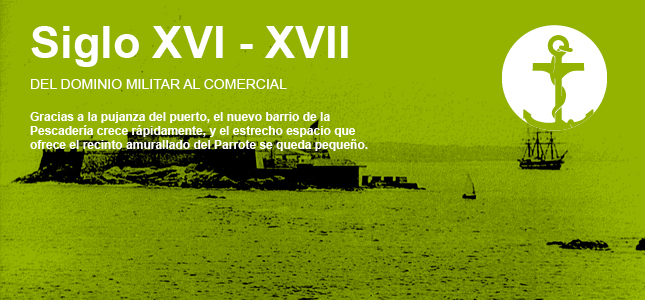16th - 17th Century

Thanks to the strength of the port, the new Pescadería district grew rapidly, and the narrow space offered by the walled enclosure of El Parrote became too small. The port gradually extended towards the interior of the bay, and the city was split into two districts: the walled upper city, with the headquarters of the institutions, and the lower city, or Pescadería, where the fishermen and merchants were concentrated, as here there were areas with easy access to loading and and unloading points for port activities.
The strength of this district grew rapidly, and the number of inhabitants soon exceeded that of the Upper City, which struggled to hang on to its control of port trade. After the discovery of America, A Coruña acquired exclusivity for the trade of Molluscs and other areas with spices, having its own Trading House.
It was during this period when work began on fortifying the city to defend the bay, with three castles that covered the port area, and work was started on constructing a fort on San Antón Island, and a shipyard in El Parrote, built for the construction of the fleet.
Finally, as of the second half of the 16th Century, A Coruña went on to become a Stronghold, with military activity acquiring greater prominence than trade. Its strategic location was fundamental in the wars with France, England and Flanders. In 1563 Philip II established the headquarters of the Captaincy General and the Royal Court in the city, bestowing the title of “Fort and guardian of the Kingdom of Galicia” upon A Coruña.
